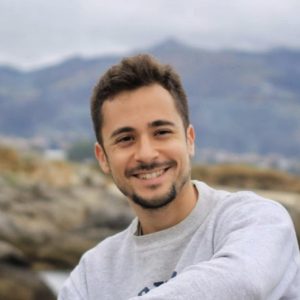
PerMedCoE webinars are open to everyone interested in PerMedCoE tools and activities. The webinars will include a 30-40 minutes presentation and a Q&A section of around 15 minutes. The recording of this webinar will be publicly available on this web page and the PerMedCoE YouTube channel.
Webinar: Logic modelling of signalling networks – CellNOpt and CARNIVAL
| Speaker | Pablo Rodriguez Mier (Joint Research Center for Computational Biomedicine, Heidelberg University) |
| Date and time | Thursday 20 January 2022, 15.00-16.00 CET |
| Target group: | Anyone interested in simulation of metabolic models, and in PerMedCoE tools and activities |
| Learning outcomes: | Describe how CellNOpt and CARNIVAL build models of signalling networks |
| Watch the recording | |
| Access the slides |
Reconstruction of signaling networks has been widely utilised in the past, for example to understand aberrations in diseased cells, or to figure out mechanism of drug actions. With the development of high throughput data platforms, it is possible to infer these networks from the data alone, alternatively we could reuse existing knowledge about possible mechanisms reported in literature and interaction databases. The prior knowledge network (PKN) describes the possible interactions among the signaling molecules and connects the perturbations to the measured molecular markers. Different formalisms build different types of models from the PKN, ranging from boolean networks to differential equations. It is then possible to train the models to the measured data using optimisation methods. CellNOpt uses different logic formalisms, which include boolean, fuzzy, probabilistic, and ordinary differential equations models which are trained against (phosphoproteomic) data. On the other hand, similar approaches are used to extract mechanistic insights from multi-omics data using CARNIVAL to train signaling networks from gene expression data using integer linear programming to infer causal paths linking signaling drives with downstream transcripts’ levels. In this webinar, we introduce CellNOpt and CARNIVAL and show how each can be used to build models of signalling networks.

About the speaker:
Dr Pablo Rodriguez Mier is a Postdoctoral Researcher at Julio Saez-Rodriguez’s group at the Joint Research-Center for Computational Biomedicine, Heidelberg University. He has a background in Computer Science and Artificial Intelligence. Prior to this, he was a Postdoctoral Researcher at the Food Toxicology Research Center of the French National Institute for Agricultural Research (INRAE) in Toulouse, in a project funded by the French National Cancer Institute (INCA). He was in charge of developing new computational methods to understand metabolic dysregulations in cancer due to mutations in the p53 gene and also in key target genes, combining previous biological knowledge with experimental data.





